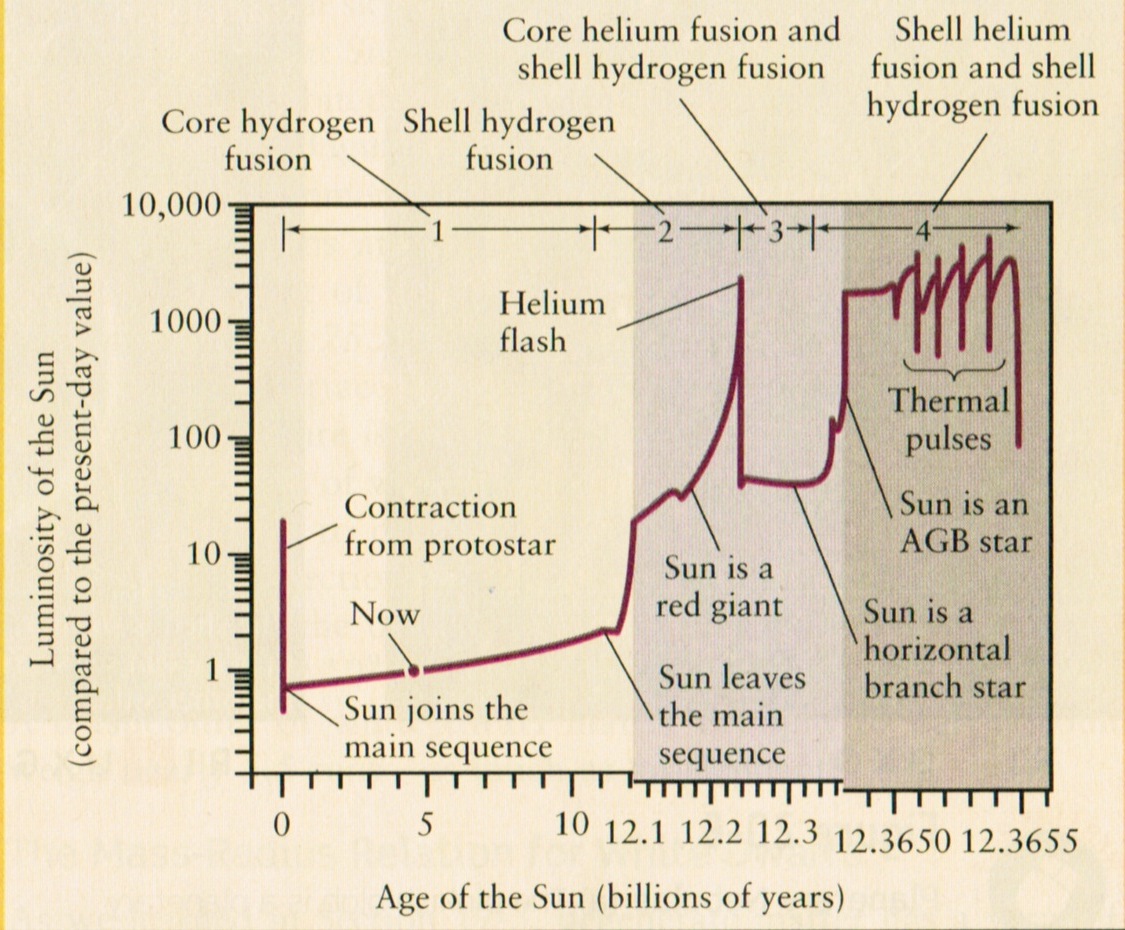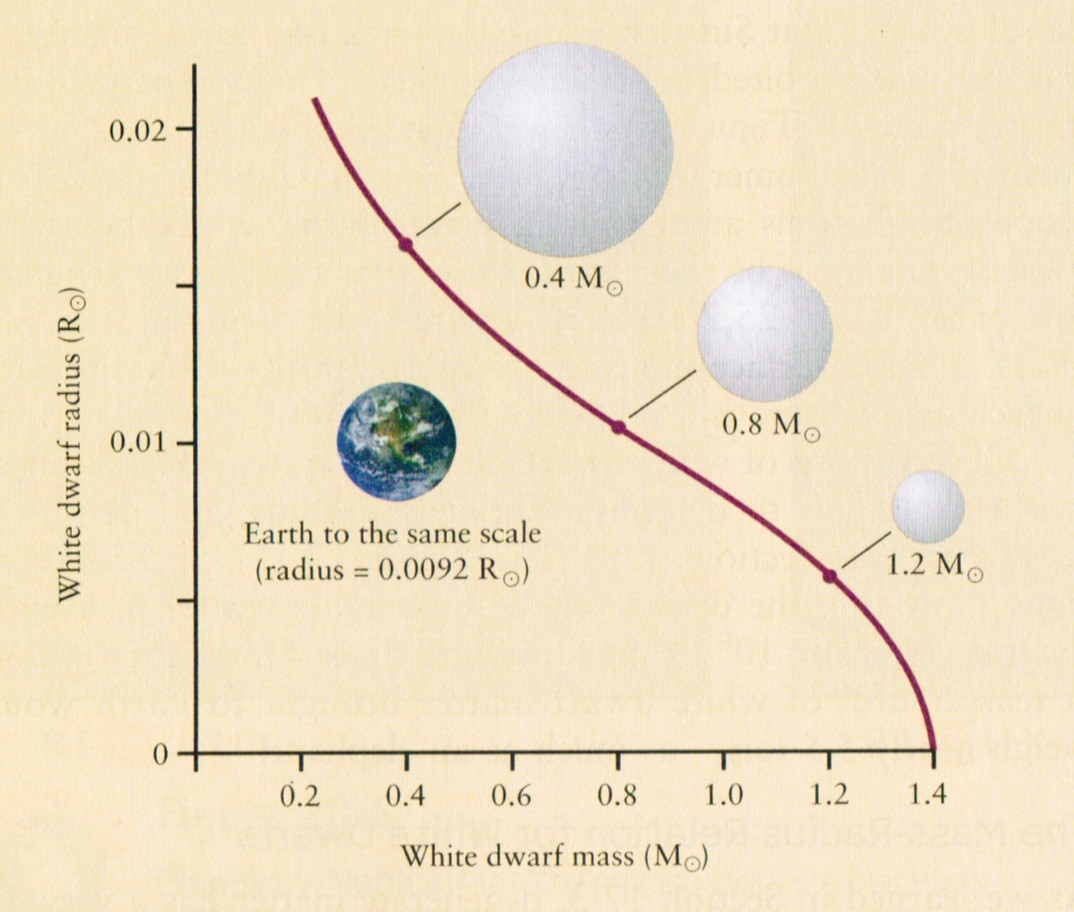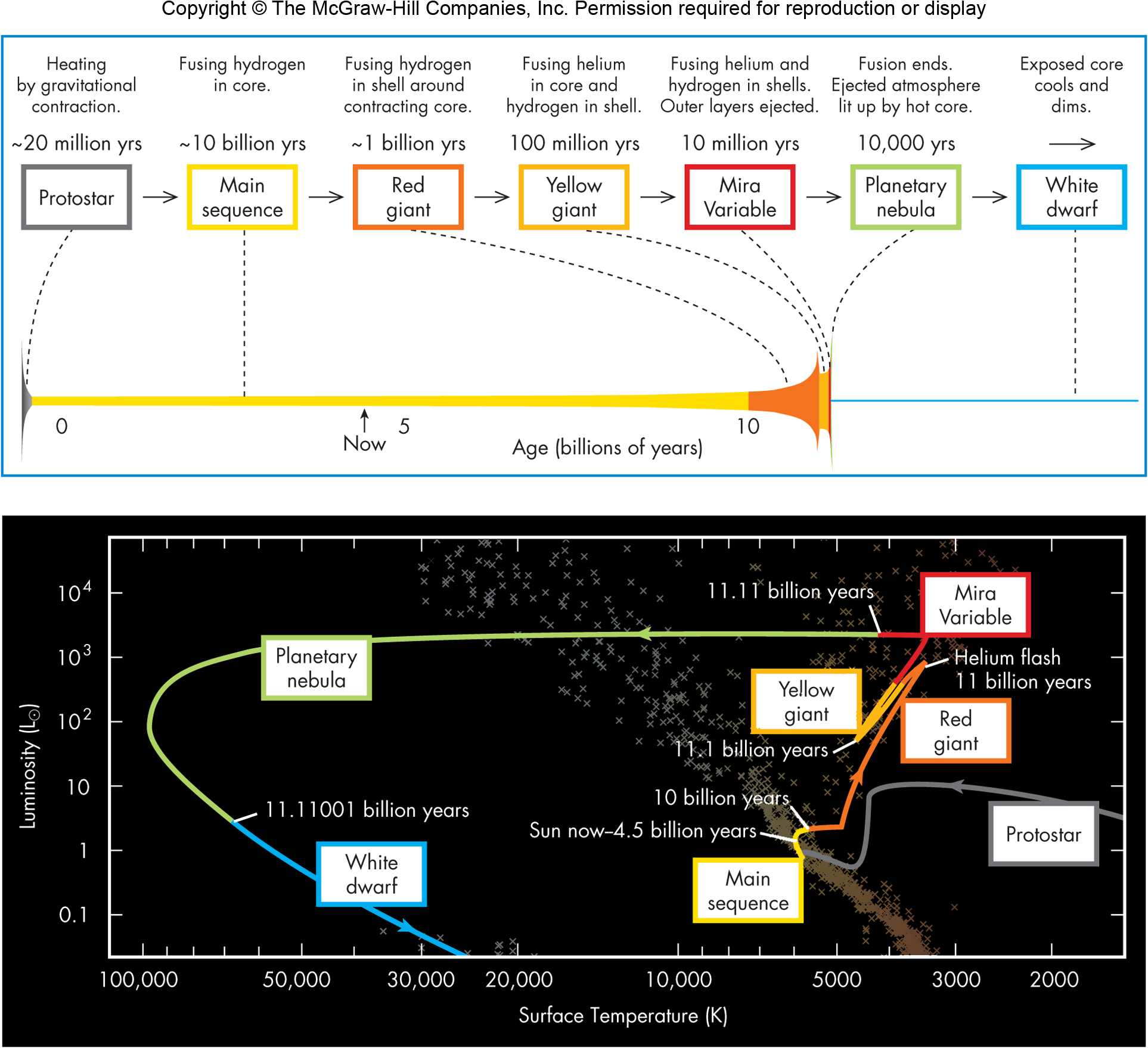Carbon stars; C/O dispersed into ISM by strong stellar winds
Helium shell flash, thermal pulses; mass loss by ejection, ~ 40%

M ~ M⊙, R ~ 109cm, Tsurface ~ 104~5K, ρaverage ~ 106g/cm3
Pressure of electron degeneracy against gravity
The maximal mass of a white dwarf


* Stars of mass (when in the main sequence) between about 0.4 M⊙ and 8 M⊙, like our Sun, evolve in the way we describe above, i.e., ending up with a white dwarf consisting mainly of carbon and oxygen.
* Stars of mass (when in the main sequence) between about 0.08 M⊙ and 0.4 M⊙ (red dwarfs) do not have the stage of hydrogen shell burning, because of strong convection, which stirs up the whole star. These stars are red dwarfs consisting mainly of helium.
* Some model computations suggest that stars of mass (when in the main sequence) between about 4 M⊙ and 8 M⊙ can have carbon burning. Such stars become white dwarfs consisting mainly of O, Ne, Na, and Mg.